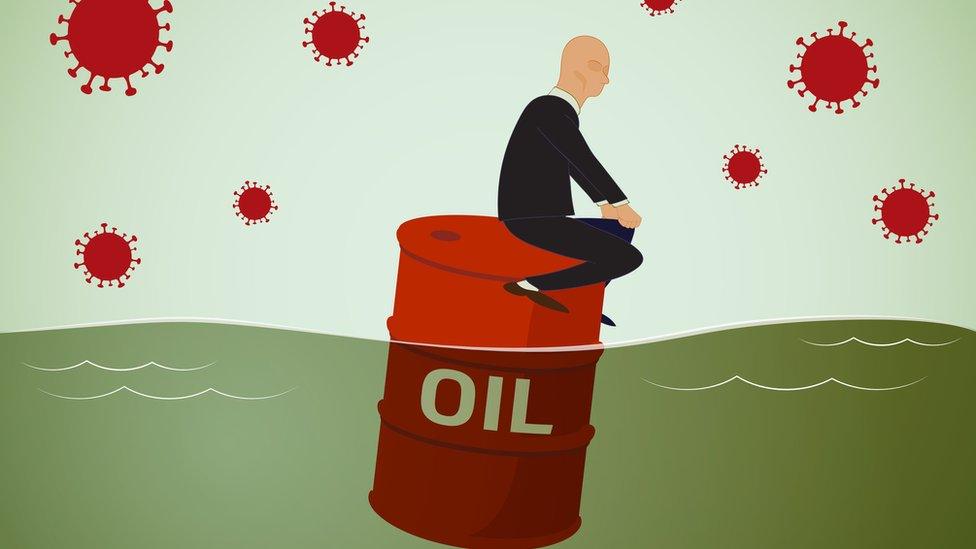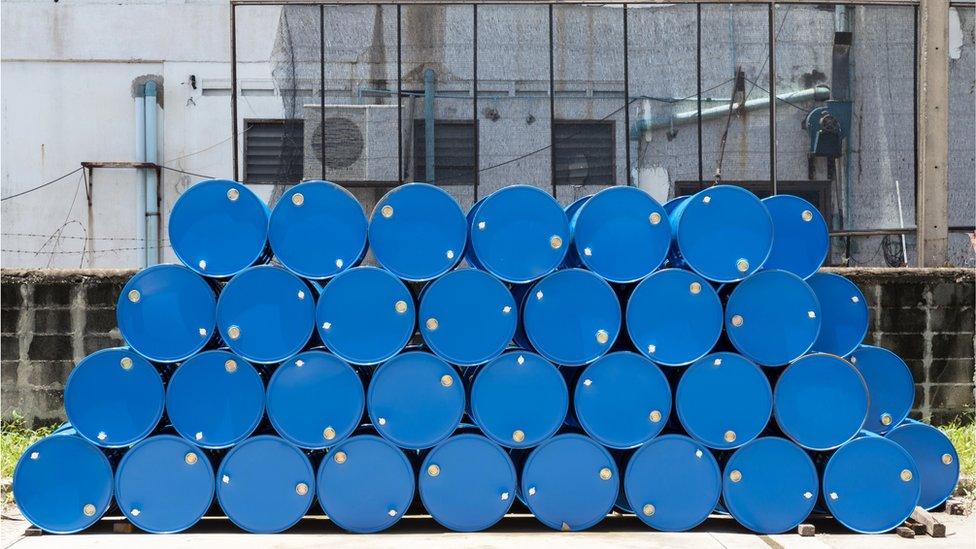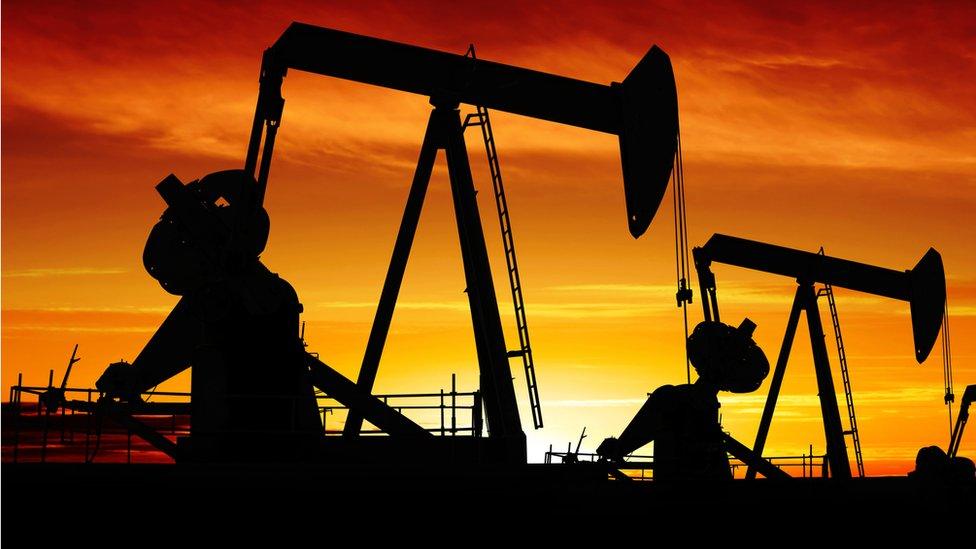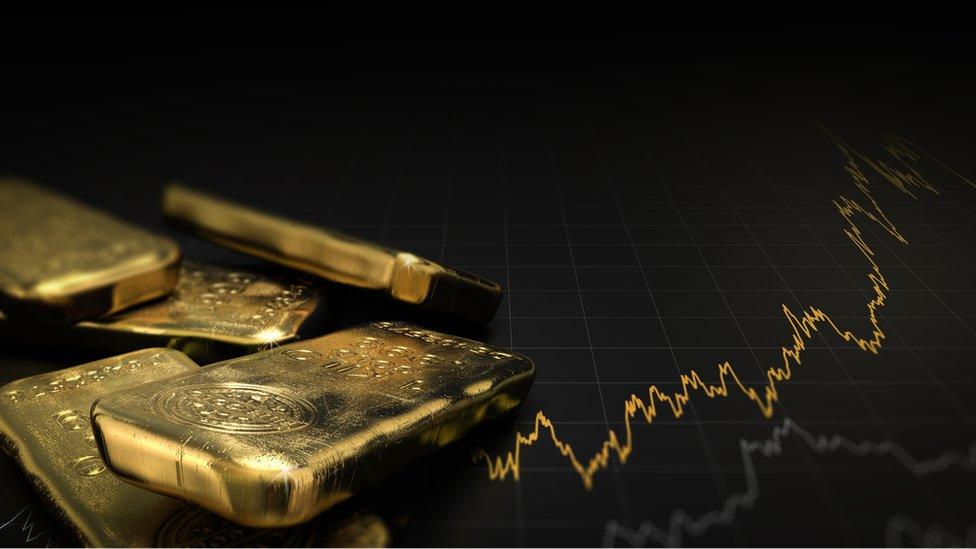Oil on stormy market waters
- Published

Oil prices had diaried an appointment with mayhem this week, but instead, the market is calmer and positive.
Global demand is up, as lockdown eases, and supply has been cut by Opec, Russia and, decisively, in the USA.
Speculators can drive volatility, and not just in the oil market.
Tuesday 19 May: pencilled in to my diary as a day to watch for oil market chaos. I'll have to focus on the new job figures instead, because the oil market is on the up.
The warning of chaos came a month ago, when the US benchmark price went negative. Global supply was vastly outstripping demand. Storage tanks at Cushing, Oklahoma - the hub for storing the region's oil - were either filling up, or booked up.
And in a quirk of America's oil market, the monthly closure of delivery contracts arrived with a lot of traders unable to store the black stuff. So they had to pay to offload it.
With even more supply and even less storage by mid-May, things were set fair for more of the same mayhem.

But things have changed. The price of West Texas Intermediate benchmark crude has risen from below $20, when the mayhem subsided a month ago, to nearly $33 per barrel, surging 12% for good measure on Monday.
Brent crude, the North Sea cocktail that serves as a benchmark for the rest of the world, was also up by nearly 8%, trading around $35. The last time they were close to these levels was mid-March, on a rapid descent because Opec had failed to agree with Russia on cutting production, and both Europe and North America were heading towards lockdown.
Supply - meet demand
What things have changed? There's more demand than there was. China and its neighbours have fired up their economies to some extent. Europe and North America are beginning to do so.
Monday's stock markets were also buoyed by a more positive vibe from eased lockdown and a supportive US Fed.
Supply has been cut. The eventual agreement between the Opec oil exporter cartel and non-member Russia was not enough last month, but Saudis added a further tranche of production cuts. There's still an imbalance, and the price is still lower than producers want or need it to be. But it looks stabilised for now.

One of the most significant parts of the supply cut was in the US. America doesn't have an autocrat's power to turn the taps. A historic quirk of the Texas oil industry is that it's regulated by the Texas Railroad Commission. It met early this month, and opted not to impose any restraints.
That's because the price was restraining enough. Fracking is a boom and bust technology. In March, production was very strong. The USA had become the world's biggest oil producer.
But by the middle of this month, it had lost two-thirds of the temporary drilling rigs used to frack for oil and gas, and counted weekly by industry data specialist Baker Hughes.
That is going to hurt those who invested in the US boom, but it's good news for other producers who needed prices to rise.
Effectively, it means the US has become the swing producer. Instead of the Saudi-led Opec cartel controlling the taps and therefore the price, the price has become the mechanism for Texan and Dakotan drillers to match demand with supply.
Food for thought
There is one other element worth noting about the decreased volatility from last month. Industry analysts explain much of the plunge into negative prices by reference to speculative flows of investment funds.
There are moves afoot to limit the ability of investors to move US markets that way - though they were also afoot 12 years ago, when speculators drove the price up to a $145 spike.

That matters because volatility directly affects investment decisions by oil companies, and that feeds through to jobs. A lot of jobs.
President Trump is aware of that in an election year. He performed an impressive contortion last week, with a Tweet that welcomed both rising crude prices - meaning jobs, and low fuel costs, which has felt like a tax cut.
It also matters because speculators can disrupt markets for other commodities that are important to the world economy. That could include food, which saw a period of global market volatility during the financial crisis in 2008, and left a lot of people hungry.
One commodity that is always there at times of crisis, as a safe haven in an investment storm, is gold. It doesn't earn you anything, but it's rare and it doesn't corrode. It's been on the rise in recent weeks, now trading at its highest levels since 2012, above $1.750 per ounce.